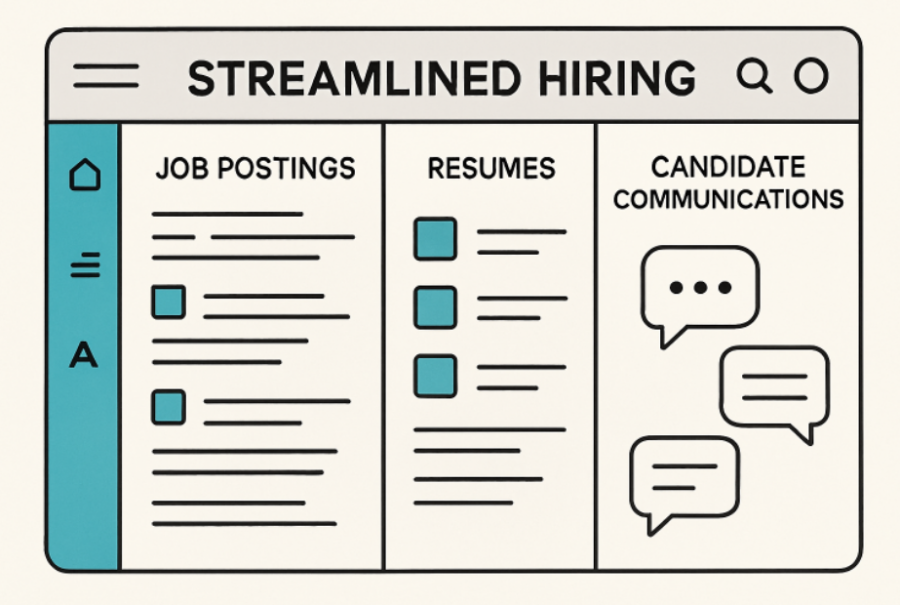Introduction to Applicant Tracking Systems
In today’s fast-paced hiring landscape, managing hundreds of applications for a single job posting is now a reality for HR teams. This surge in applicant volume amplifies the challenge of staying organized and efficient. An Applicant Tracking System (ATS) provides a centralized solution to this issue, giving businesses of all sizes the tools they need to automate, track, and refine their recruitment processes for better results.
One key benefit of modern recruitment is the use of ATS tracking. ATS tracking systems not only help keep applicant data in one place but also enhance hiring outcomes through automation and analytics, making it far easier to sift through candidates and focus on finding the best fit for each role.
Key Features of an ATS
- Job Posting and Distribution: An ATS allows recruiters to post job listings simultaneously to multiple popular job boards, career sites, and social media channels, ensuring maximum reach and visibility.
- Resume Screening: Automated algorithms analyze and filter incoming applications, identifying the most qualified candidates based on education, skills, experience, and other custom parameters. This reduces manual screening and mitigates unconscious bias.
- Candidate Communication: Built-in tools automate updates and feedback to applicants, ensuring a consistent and timely candidate experience. Personalized templates and bulk messaging keep candidates engaged throughout the process.
- Interview Scheduling: Integrated calendars and scheduling assistants eliminate back-and-forth emails, making it easy to set up interviews without overlapping, delays, or missed appointments.
- Data Analytics: Reporting dashboards break down critical recruitment metrics—such as time-to-fill, source of hire, and applicant conversion rates—equipping HR professionals to identify bottlenecks, optimize strategies, and measure success more accurately.
Benefits of Implementing an ATS
- Enhanced Efficiency: Automating manual processes saves considerable hours for recruiters and hiring managers. Routine work like screening, emailing, and scheduling is streamlined, enabling HR teams to focus on higher-value tasks.
- Improved Candidate Experience: Responsive, consistent communication and user-friendly application portals help applicants stay informed and positive about your brand, increasing the likelihood of accepted offers and long-term engagement.
- Better Collaboration: With all applicant and process data stored centrally, HR professionals and hiring managers can share feedback, track progress, and cooperate in real-time. This fosters more seamless teamwork and decision-making.
- Data-Driven Decisions: Access to granular analytics helps organizations spot inefficiencies, identify top-performing recruitment channels, and continuously refine hiring practices for better future outcomes.
Choosing the Right ATS for Your Organization
Selecting the optimal ATS solution depends on several factors unique to your company’s needs. Key considerations include scalability—will the ATS grow with your company?—as well as user-friendliness, integration compatibility with other HR tools, data security, and customer support. It’s also valuable to look for platforms that offer customizable workflows and advanced analytics.

Involve all stakeholders—from HR professionals to hiring managers—in initial needs assessments and product demonstrations to ensure the platform selected aligns with your procurement goals. Prioritize features that will directly address your hiring challenges, and don’t hesitate to seek peer advice or independent reviews for further validation.
Conclusion
With the evolving hiring landscape, implementing an ATS can revolutionize how your company attracts, evaluates, and onboards top talent. From automation and collaboration to in-depth analytics, an ATS transforms recruitment into an organized, efficient, and candidate-centric function.
Modern organizations that embrace technology like ATS position themselves for long-term success in attracting and retaining skilled professionals. To learn more and stay ahead with the best hiring practices, explore reputable sources for additional resources on optimizing your HR technology stack.



 Your total news and information resource for all things Science, Technology, Engineering / Mathematics, Art, and Medicine / Health.
Your total news and information resource for all things Science, Technology, Engineering / Mathematics, Art, and Medicine / Health.
Leave a Comment